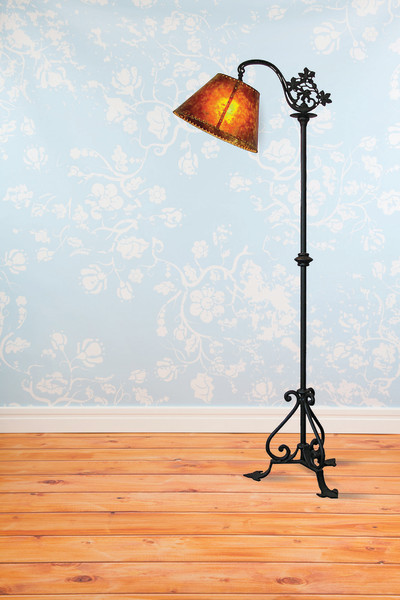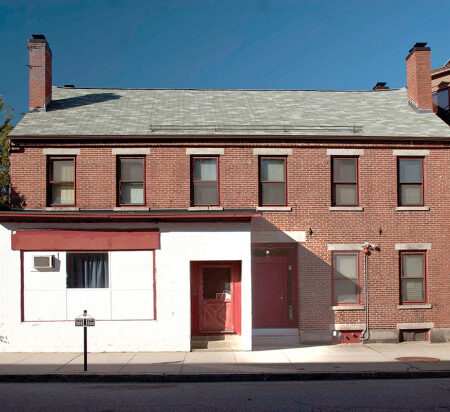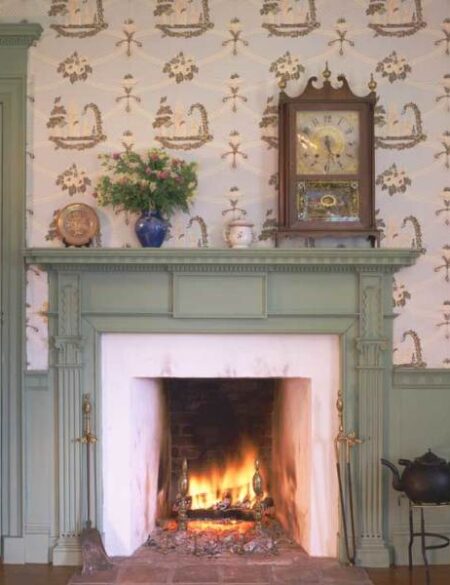This content was originally published on OldHouseOnline.com and has been republished here as part of a merger between our two businesses. All copy is presented here as it originally appeared there.
With the wide acceptance of electricity and leisure time for reading and playing cards, floor and table lamps came into their own during the 1920s, ’30s, and ’40s. Still practical today, they add a touch of Art Nouveau, Deco, or Historical Revival style to a room. Floor lamps include torchieres (sending light toward the ceiling) and, later, various double- and triple-bulb upright models. The bridge lamp got its name through the astounding popularity of bridge and other card games in the ‘teens and ’20s. A bridge lamp is a floor lamp about 52³-60³ high, with an extended arm that holds the shaded bulb in a downward position: perfect for illuminating the card table.
With a decorative arm and tripod base, this reproduction is the ‘Waltham Floor Lamp’ for a three-way bulb, 54³ high, shown in the Brown Rust finish with a mica shade, $684. (Other finishes and mica and glass shades are available.) Steven Handelman offers custom-made wrought-iron lighting and metalwork products: “all welds ground smooth, cracks filled and slag removed, with good paint as a base coat and hand-applied premium finishes.“ Their fixtures are U.L. rated. Steven Handelman Studios,(805) 421- 4293.











